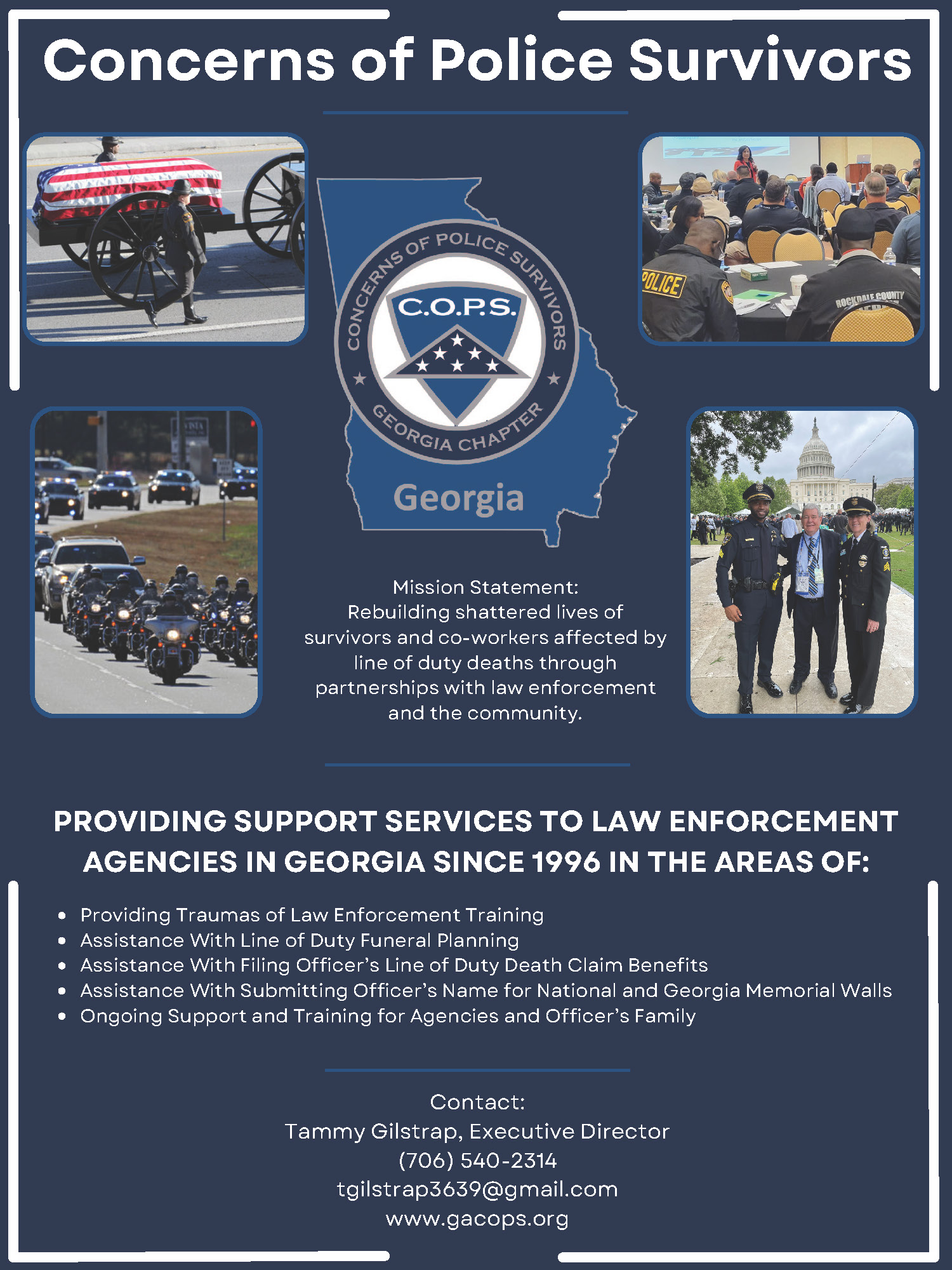
Article
Spring | 2025

The Impacts of Police Education Hiring Requirements on Female and Black Officers, and Implications for Police Recruitment and Retention
By David T. Snively
Spring | 2025
Introduction
The debate over whether police officers should be required to hold college degrees has persisted for decades. Nearly every national report on the police since 1931 has recommended a college education standard for police officers, calling it essential to advancing the law enforcement profession.1 In their final report, the President’s Commission on Law Enforcement and the Administration of Justice wrote, “the quality of police service will not significantly improve until higher educational requirements are established for all personnel,” 2 and later reports called for mandating bachelor’s degrees no later than 1982.3 Simultaneously, those same national policing reports have called for increasing employment of minorities and women,4 and advocates increasingly argue that police agencies should represent the racial and gender makeup of their communities – a concept referred to here as “community-police reflectivity”. Despite these recommendations, there has been little research on how raising education requirements impacts the hiring of minority or female officers. This study addressed that gap, providing new insights into police recruiting and retention and offering practical guidance to policing leaders.
Background and Purpose of the Study
Calls for higher education date back more than a century. August Vollmer, often called the “Father of American Policing,” was the first American police chief to mandate bachelor’s degrees for his officers in Berkley, California, after persuading the University of California to create a policing program in 1916.5 Several decades later, the President’s Commission on Law Enforcement and the Administration of Justice reiterated this call,6 as did several other policing reports of the 1960s and 1970s; 7 and the Final Report of the President’s Task Force on 21st Century Policing echoed it nearly 100 years after Vollmer’s first proposal.8 The assumption underlying each of these calls for increased education hiring requirements is that college-educated officers would be less likely to use force and more likely to interact constructively with community members while solving complex social problems.9
Parallel to these calls for more education, there has been increasing demand to diversify police ranks, particularly by increasing the number of minority and female officers. The theory of representative bureaucracy suggests a public agency should reflect the demographics of the community it serves.10 This concept is particularly pronounced in policing, as the police represent the most visible part of government, especially of local governments.11 Policing-specific research has found visibly diverse police departments representing both genders and various racial and ethnic groups fosters greater trust and legitimacy between community members and police.12
As police agencies across the United States struggle to meet recruiting and retention goals, particularly among underrepresented groups, some police leaders have wondered if higher education requirements might inadvertently exclude women and minority candidates. With this in mind, researchers focused on three primary questions:
- Do varying levels of college education requirements affect the number of female officers hired by a police department?
- Do those requirements affect the number of Black officers hired?
- Do education requirements impact the overall “reflectivity” of a police department, meaning how closely the agency’s demographics align with the population it serves?
Although the primary purpose of this study was to understand the relationship between education hiring requirements and police department diversity and community-police reflectivity, several other predictors of hiring emerged. Notably, several expected predictors – such as officer pay and recruiting bonuses – had no impact on hiring. Considered together, the data suggest police hiring is more the result of a police department’s organizational culture than any other factor.
Brief Overview of Methods
Police recruitment and retention is influenced by a wide array of factors, including not just agency hiring policies but also labor markets and competing employment sectors, unionization and collective bargaining agreements, regional variation in community sociodemographics and educational attainment, the nature of the police hiring process and agency turnover, rates of residential population change, and police officer pay, among others. 13 To account for this, a unique dataset was created that combined data from a number of sources for the period from 2000 to 2020. The principal variables are drawn from the Bureau of Justice Statistics (BJS) Law Enforcement Management and Administrative Statistics (LEMAS) survey, the U.S. Census Bureau American Community Survey (ACS), and the Bureau of Labor Statistics (BLS) Occupational Employment and Wage Statistics (OEWS) program.
Police departments’ education hiring requirements were categorized into one of four categories: (1) no formal requirement, or a high school diploma; (2) some college hours required, but no degree requirement; (3) associate degree required, or (4) bachelor’s degree required.
A statistical technique known as a Poisson Pseudo Maximum Likelihood (PPML) regression was employed. This method enabled an analysis of the relationships between education hiring requirements and various aspects of police department demographics using the LEMAS, ACS, and OEWS data. Much greater detail on the methodology is available in the full study, which is available through Georgia State University and currently undergoing peer review for an academic journal.
Brief Overview of Related Literature
For this study, a comprehensive literature review was conducted that considered representative bureaucracy, visible diversity in police agencies, measurements of organizational diversity, expected and actual outcomes of higher education hiring requirements for police officers, rates of degree earning, and the impacts of other community, organizational, and procedural factors on policing.
In summary, the literature widely agrees diversity matters in government, and policing is the most visible element of government. Furthermore, including women and minorities in police agencies has identifiable benefits to the organizations and to communities. Separately, there is compelling evidence to suggest college education has a measurable impact on police officer performance, although a number of studies are in conflict. For example, some studies show no relationship between a bachelor’s degree and use of force;14 while others find college-educated officers might arrest more minorities than their lesser-educated counterparts.15 Nevertheless, it is upon this evidence that college education hiring requirements are largely based. However, significant variation in rates of degree earning and college attendance by sex and race creates the probability these requirements have a disparate impact on specific groups. This limits agencies’ ability to hire from labor pools already constrained by prospective employee interest and suitability, wages, hiring, retention, and turnover, and other factors.
These conflicting findings further confirmed the need for a study that examines the influence of education hiring requirements on police department demographics.
Core Findings
Departments with higher education requirements did not appear to struggle in hiring female officers. In fact, agencies that require bachelor’s degrees are statistically more likely to hire female officers than other agencies. Similarly, agencies that required “some college” employed more Black officers than agencies that required only a high school diploma. Finally, it was determined agencies requiring bachelor’s degrees had slightly better parity between the number of female officers and the number of female community members; and degree requirements had no impact on community-police reflectivity of Black officers. Perhaps notably, the data showed as the count of Black residents increases, so does the count of Black officers; but this is not always true for female officers.
Separate from the initial inquiries into the impact of education requirements, analysis also revealed several other factors in a police agency that likely matter more to hiring. For example, the best predictor of future female officers is the count of current female officers. This suggests both that visible diversity in a police department attracts future diversity (i.e.: when an applicant can see herself represented in the police department, she is more likely to apply there), and this momentum compounds over time. Similarly, the count of female officers was higher in agencies where there was, or where there had previously been, a female police chief. Because data on the race of police chiefs has only been collected in two cycles of LEMAS, conclusions on the race of a police chief could not be assessed. Separately, accreditation programs and tuition reimbursement programs had a modest effect attracting female and Black officers. These programs also appeared to have modest correlation with officer retention.
Implications and Practical Application
The initial implications of the research are that increasing education hiring requirements does not adversely impact female or Black officer candidates, and in some cases they may increase minority representation. Considered together, however, the findings suggest degree requirements themselves are not the root cause. Rather, degree requirements are emblematic of other police department and community characteristics – such as community political and economic conditions – and those characteristics are more likely responsible for the variations in hiring and retention. While the study was limited to female and Black officers, it seems likely that these agency and community characteristics very likely influence hiring and retention more broadly.
Another important finding of the study is police officer salary, when considered within more than 20 model specifications, is never a significant predictor of hiring. Specifically, although agencies that require bachelor’s degrees had slightly higher average salaries and significantly higher starting salaries than other agencies in the study, neither starting nor average salaries affected vacancy rates or staffing parity. This finding could be synthesized as, “money is not the problem in police recruiting,” or, at least, salary alone is not the driving factor behind either recruitment or retention of police. This finding is consistent with a review of the 2020 LEMAS data for another forthcoming article, which shows no effect of hiring bonuses on recruitment or retention. Instead, it demonstrates non-financial factors are more likely to impact candidate self-selection into police recruiting processes.
Conclusion
Politicians, advocates, membership associations, scholars, and policing leaders have reached varying conclusions and proffered differing policies and solutions for police recruiting and requiring, few of which have been data informed. By contrast, the study exposes wealth of empirical evidence about the nature of police recruiting broadly and impacts on female and Black officers specifically. The study shows a combination of educational requirements, leadership, and economic conditions significantly influence the count of female and Black officers in police departments. Variation in officer demographics over time suggests diversity in policing is shaped both by internal policies and external societal trends and events. The analysis of labor rates and community characteristics demonstrates the impactful role economic conditions play in shaping the gender composition of police departments. Also, economically disadvantaged communities may face additional barriers to recruiting and retaining female officers. Within agencies themselves, internal dynamics – rather than external ones – are significant determinants of diversity and, probably, recruiting and retention. And although educational requirements appear to promote gender diversity, this is largely impacted by economic conditions, effective organizational management, and community context.
For policy makers and policing leaders, these findings offer valuable insights into the factors most effective in increasing count of underrepresented officers, and they offer perspective on the community contexts within and from which police departments are constructed. These offer practical implications for policy and practice, as they suggest that departments should consider both agency factors, like higher educational standards, competitive and fair wages, and increased staffing rates; and they implicate the need for targeted recruiting and retention interventions that consider broad community contexts.
Advisory Commission on Intergovernmental Relations. (1971). State and local roles in the
federal system. U.S. Government Printing Office.
Bond, M. (2014, January 16). How the “Father of Law Enforcement” created an academic
vision for criminal justice that lives on today. American Military University Edge. https://shorturl.at/SDDOQ
Borjas, G.J. (2002). The wage structure and the sorting of workers into the public sector.
Working paper for the National Bureau of Economic Research. https://sites.hks.harvard.edu/fs/gborjas/publications/journal/NBERw9313.pdf
Johnson, T.L., Johnson, N.N., & Sevigny, E.L. (2022a). The college shield: examining the role
of officer education in violent police encounters. Psychology of Violence, 12(4), 260-269.
Johnson, T.L., Johnson, N.N., Sabol, W.J., & Snively, D.T. (2022b). Law enforcement
agencies’ college education hiring requirements and racial differences in police-related fatalities. Journal of Police and Criminal Psychology, 37, 681-698. https://doi.org/10.1007/s11896-022-09534-6
Johnson, T.L., Johnson, N.N., Sabol, W.J., Hartman, M.A., & Snively, D.T. (2024). Collective
bargaining, officer pay, and racial differences in police lethality rates. Police Practice and Research: An International Journal. https://doi.org/10.1080/15614263.2024.2355149
Kalleberg, A.L. & Sorensen, A.B. (1979). The sociology of labor markets. Annual Review of
Sociology, 5, 351-379. https://www.jstor.org/stable/2945959
Kernaghan, Kenneth (1991) ‘The Evolution of Representative Bureaucracy in Canada’, in
Vincent Wright (ed.) The Representativity of Public Administration, pp. 127-144. Brussels: International Institute of Administrative Sciences.
Kim, P.S. (1994). A theoretical overview of representative bureaucracy: Synthesis.
International Review of Administrative Sciences, 60(3), 385-397.
Kingsley, J.D. (1944). Representative bureaucracy. Yellow Springs, OH: Antioch Press.
Leatherby, L. & Oppel Jr., R.A. (2020). Which police departments are as diverse as their
communities? The New York Times. https://www.nytimes.com/interactive/2020/09/23/us/bureau-justice-statistics-race.html
LeDoux, J., et al. (1984). Higher education for law enforcement: Half a century of growth.
Police Chief, 51(4), 22-24.
Lum, C., Koper, C.S., & Wu, X. (2021). Can I really defund the police? A nine-agency study
of police response to calls for service. Police Quarterly, 25(3), 255-280. https://doi.org/10.1177/10986111211035002
Marenin, O. (2004). Police training for democracy. Police Practice and Research, 5(2), 107-123.
McCabe, J.E. (2013). An analysis of police department staffing: How many officers do you
really need? ICMA Center for Public Safety Management White Paper. https://www.certuspss.us/s/305747_Analysis-of-Police-Department-Staffing-_-McCabe.pdf
Miller, E.J. (2023). The concept of the police. Criminal Law and Philosophy, 17, 573-595.
https://doi.org/10.1007/s11572-023-09682-8
Morabito, M., & Shelley, T. O. (2015). Representative bureaucracy. Race and Justice, 5(4), 330–
Mosher, F. C. (1982). Democracy and the public service. Oxford University Press on Demand.
National Advisory Commission on Criminal Justice Standards and Goals. (1973) A National
strategy to reduce crime: Reports on the police. Washington, D.C.: United States Government Printing Office.
Oliver, W.M. (2016). Celebrating 100 years of criminal justice education, 1916-2016. Journal
of Criminal Justice Education, 27(4), 455-472. https://doi.org/10.1080/10511253.2016.1186992
President’s Commission on Law Enforcement and the Administration of Justice. (1967). The
challenge of crime in a free society. U.S. Government Printing Office.
President’s Task Force on 21st Century Policing (2015). Final report of the President’s Task
Force on 21st Century Policing. Office of Community Oriented Policing Services.
Rosenfeld, R., Johnson, T.L., & Wright, R. (2020). Are college educated police officers
different? A study of stops, searches, and arrests. Criminal Justice Policy Review, 31, 206-236.
Sherman L.W., the National Advisory Commission on Higher Education for Police Officers
(1978). The quality of police education. Jossey-Bass.
Shusta, R.M., Levine, D.R., & Olson, A.T. (2019). Multicultural law enforcement: Strategies
for peacekeeping in a diverse society (#7). Pearson.
Smith, S.M. & Aamodt, M.G. (1997). The relationship between education, experience, and
police performance. Journal of Police and Criminal Psychology, 12, 7-14.
Stafford, K.L. (1982). An analysis of selected social and economic factors affecting
participation in higher education. Dissertation, Ohio State University, 8222183.
U.S. Department of Justice. (2016). Civil Rights Division, Office of Justice Programs & U.S.
Equal Employment Opportunity Commission (2016). Advancing diversity in law enforcement. https://www.eeoc.gov/advancing-diversity-law-enforcement#_Toc463016122
Walker, S. (1985). “Racial Minority and female employment in policing: The implications
of ‘glacial’ change.” Crime & Delinquency 31(4), 555–572.
Wilson, J.M. & Weiss, A. (2014) Police staffing allocation and managing workload demand: A
critical assessment of existing practices. Policing: A Journal of Policy and Practice, 8(2), 96-108.
Willits, D.W., & Nowacki, J.S. (2014). Police organization and deadly force: An examination
of variation across large and small cities. Policing & Society, 24(1), 63-80.
Worrall J.L., Bishopp S.A., Zinser S.C., Wheeler A.P., & Phillips, S.W. Exploring bias in police
shooting decisions with real shoot/don’t shoot cases. Crime & Delinquency, 64(9), 1171-1192.
_______________________________________________________
1 LeDoux et al., 1984
2 President’s Commission on Law Enforcement and the Administration of Justice, 1967
3 Advisory Commission on Intergovernmental Relations, 1971; National Advisory Commission on Criminal Justice Standards and Goals, 1973; Smith & Aamodt, 1997; Stafford, 1982.
4 Walker, 1985
5 Bond, 2014; Oliver, 2016
6 President’s Commission on Law Enforcement and the Administration of Justice, 1967
7 Advisory Commission on Intergovernmental Relations, 1971; National Advisory Commission on Criminal Justice Standards and Goals, 1973; Smith & Aamodt, 1997; Stafford, 1982.
8 President’s Task Force on 21st Century Policing, 2015.
9 Johnson et al., 2022b, Sherman, 1978
10 Kernaghan, 1991; Kim, 1994; Kingsley, 1944; Morabito & Shelley, 2015; Mosher, 1982
11 e.g.: Miller, 2023
12Leatherby & Oppel, 2010; Marenin, 2004; U.S. Department of Justice, 2016
13 Borjas, 2016; Kalleberg & Sorensen, 1979; Lum et al., 2021; McCabe, 2013, 2017; Johnson et al., 2024; Wilson & Weiss, 2014; Shusta et al., 2019
14 i.e.: Willits and Nowacki, 2014; Worrall et al., 2018
15 Johnson et al., 2022a; Rosenfeld et al., 2020

David Blake

Duane Wolfe

Guler Arsal

Joel Suss
Research contributor and author info go here.

david T Snively
David T. Snively is the Assistant Director, Policy and Governance, for the International Association of Chiefs of Police. He holds a Ph.D. in Criminology from Georgia State University and Master of Public Administration from Kennesaw State University. He is a graduate from the Northwestern University Center for Public Safety, School of Police Staff Command College. In addition, he has more than 14 years of law enforcement experience.











You May Also Like:
GACP PARTNERS





















